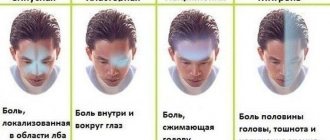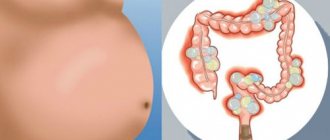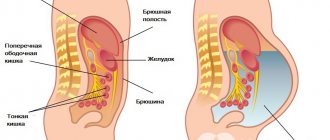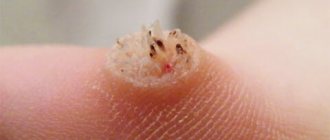Every person knows what snoring is, since it affects up to 30% of the adult population of the Earth. And if for others it is a certain nuisance when someone in the family snores, then for those with this disease it is a serious health risk.
Snoring is one of the main symptoms of a disease called obstructive sleep apnea syndrome (OSA). This pathology manifests itself as short-term pauses in breathing during sleep, followed by loud snoring.
Interesting facts about snoring:
- every 5th Russian snores, 60% of Americans snore in their sleep
- men snore most often, people who smoke, overweight people, older people snore more often than young people
- Children sometimes snore too
- snoring is not normal and snoring can be treated
- snoring is sometimes the only sign of apnea (stopping breathing during sleep).
The mechanism of snoring and OSA
Why does a person snore? The cause of snoring is narrowing, curvature, relaxation of the walls of the airways:
- When you breathe, the air flow changes. In normal breathing, air passes directly through the nose and throat very quickly and supplies oxygen to the body in a timely manner. When the walls are changed (there are obstacles, the walls are curved), the air swirls, creating turbulence, which creates sound. In addition, vibrations of soft tissues (the uvula) may occur, which intensifies the sound.
- Movement of the soft tissues of the pharynx. The sound of snoring indicates that the walls of the throat are touching, oscillating or vibrating. This occurs due to a decrease in muscle tone, as well as due to a reduction in the distance between the walls.
When does muscle tone change? This is facilitated by age, alcohol, low levels of thyroid hormones, chronic inflammatory processes in the pharynx, smoking (replacement of muscles with connective tissue), disruption of the innervation of pharyngeal tissue.
When does the distance between the walls decrease? This is facilitated by excess fatty tissue in the pharynx, enlarged tonsils (adenoids, tonsil hypertrophy), swelling due to allergic reactions.
What is Apnea? During sleep, overall muscle tone decreases. In particular, the muscles that make up the structure of the pharynx relax. If there are predisposing factors that cause narrowing of the airways, then the sagging soft palate beats against the walls of the pharynx during the passage of air flow. If the airways are completely blocked, a short-term cessation of breathing occurs - apnea. There can be up to 400 such stops per night.
- During apnea, partial or complete arousal occurs in the brain, leading to a significant deterioration in sleep quality.
- The patient often wakes up with a feeling of suffocation, sleep becomes restless and unrefreshing.
- OSA is one of the main sources of nightmares.
- During the day, the patient feels tired and sleepy, irritability increases, and mood worsens (see why you always want to sleep)
- The consequence of this situation is an increase in blood pressure, an increased risk of heart attack and stroke.
- Memory deterioration and the development of impotence are also possible.
Types of operations
Modern medicine offers several types of surgical interventions to get rid of snoring. The choice of surgical treatment method depends on the causes of the pathology, the nature of the disease and the general condition of the patient.
Uvulopalatoplasty
Surgical treatment of snoring using uvulopalatoplasty (UPP) is aimed at improving airway patency and normalizing breathing during sleep.
During the operation, the surgeon excises tissue in the area of the soft palate and throat, usually UPP is performed together with the removal of the tonsils (uvulopalatopharyngoplasty). The intervention takes place under general anesthesia, since the procedure is quite complex and time-consuming. Self-dissolving threads are used as suture material, so the patient does not need to subsequently remove the sutures.
Indications for this type of surgical intervention are uncomplicated snoring associated with hypertrophic changes in the soft tissues of the oropharynx. Surgery is prescribed if conservative treatment methods do not give the desired effect.
Contraindications to surgical treatment are associated with severe chronic pathology, inflammatory processes in the throat and nose, cancer, and epilepsy. It is also not recommended to perform SCP during pregnancy and lactation.
The advantages of the technique are effectiveness and a short period of recovery treatment. At the same time, this is a rather traumatic method. 5% of patients undergoing UPP experience serious postoperative complications (bleeding or infection). Often, persistent side effects develop after surgery, including: difficulty swallowing, the sensation of a foreign object in the mouth (in about 27% of patients), disturbances in voice, smell and taste due to plastic surgery of the tissues of the soft palate and throat.
They often try to replace uvulopalatoplasty with surgery using a laser.
Laser uvulopalatoplasty
Laser surgery is indicated for patients whose tonsils have already been removed or are not enlarged. This is a variant of the classic UPP using a laser beam instead of a scalpel. When the palate is injured by the laser, it becomes harder due to scarring, and snoring goes away.
Advantages of laser surgery:
- instant coagulation of blood vessels and eliminating the risk of massive bleeding;
- relative safety of the procedure;
- short recovery period;
- treatment on an outpatient basis and the ability to go home immediately after surgery.
The disadvantages of the method include its low effectiveness in the treatment of apnea. This surgery can help significantly reduce the intensity and frequency of snoring.
Another disadvantage of laser surgery is the frequent complication of tissue necrosis, which causes severe pain and bad breath. Many patients complain of excessive salivation after surgery and the need to follow a strict diet during the recovery period.
Contraindications to this procedure are the same as for classical AMR.
Radio wave surgery (somnoplasty)
The method of uvulopalatoplasty using radio wave radiation is based on the ability of high frequency waves (up to 4 MHz) to locally heat tissue cells that need to be removed to relieve patients from snoring.
Advantage of the technique:
- maintaining the integrity of surrounding tissues,
- minimal blood loss,
- absence of postoperative scars,
- the possibility of performing the operation under local anesthesia and on an outpatient basis.
If snoring is caused only by pathology of the soft tissues of the oropharynx, recovery usually occurs after surgery. However, if the patient has other causes of snoring, further treatment using combined techniques may be required. In general, radio wave surgery is considered ineffective compared to other methods and is rarely recommended by specialists.
There is no change in voice after radio wave surgery. In rare cases, possible: hemorrhages, infection of the affected area of the pharynx, swelling of the mouth and tongue, bleeding.
Surgical correction of the nasal septum (septoplasty)
If the cause of snoring is a deviated septum in the nose, they resort to correcting it - septoplasty.
The most common method of performing the operation is closed. In this case, the operation is performed through small punctures in the mucous membrane of the nasal cavity. A special thin probe is inserted through them, after which the mucous membrane is separated from the cartilage and bone, and the septum is shifted to the correct position. Self-absorbing sutures are placed on the incisions inside the nose; no stitches remain on the face. Strengthening and fixation of tissues is carried out using turundas installed in the nose. The operation usually lasts from half an hour to 2 hours, depending on the complexity.
A classic operation with open access, when the surgeon cuts the skin, is prescribed for severe curvature of the nasal septum for better visual control. After removing the deformed areas of cartilage, the patient is given absorbable sutures and special rhinological splints are installed in the nose. To fix the excised septum, a plaster cast is applied to the middle third of the face.
The risk of complications after septoplasty depends on the characteristics of the pathology, and usually does not exceed 3-4%. The most common complication is bleeding and hemorrhage; less commonly, nasal deformities, septal perforation, abscesses caused by infection, etc. can be observed.
Laser septoplasty is prescribed for slight curvature of the cartilaginous part of the nasal septum. Deformed areas of cartilage are heated with a laser and the tissue is fixed in the desired position. The laser cannot affect the bone, so the possibility of performing such an operation is determined by an ENT specialist after examination. The procedure takes about 20 minutes. Laser septoplasty is considered safe and gentle; it is performed without anesthesia on an outpatient basis and does not cause bleeding or swelling.
Tracheostomy
Tracheostomy is the most radical method of surgical treatment of snoring, which is used extremely rarely if there is a risk of complete respiratory arrest during sleep.
In this case, a plastic tracheostomy tube is installed through an incision in the neck, through which air, bypassing the upper respiratory tract, enters directly into the trachea and lungs.
Such an intervention is associated with numerous risks to the patient’s health and a radical change in his lifestyle.
Other types of operations
Other methods of surgical treatment for snoring include:
- installation of palatal implants to tighten tissues and create a specific frame;
- surgery to reduce the back of the tongue using a laser;
- tightening the genioglossus muscle to prevent tongue retraction during sleep;
- attachment of the tongue and epiglottis to the hyoid bone;
- osteotomy of the upper and lower jaws.
Such operations are prescribed when other methods of conservative and surgical treatment of snoring are unsuccessful, and sleep-disordered breathing is threatening to the patient.
Causes of snoring
Diseases that cause snoring:
- Disturbances in nasal breathing, and this disturbance must be significant to force the patient to switch to mouth breathing at night. Among these reasons are: deviated nasal septum, nasal polyps, nasal valve pathology, adenoids in children, Thornwald’s bursa, etc.
- Benign or malignant tumors of the respiratory tract
- Inflammatory processes in the nose - narrowness of the nasal passages due to chronic runny nose, sinusitis, sinusitis, chronic tonsillitis (including sore throat)
- Congenital anomalies of the structure of the nose or pharynx, long uvula, malocclusion, underdevelopment of the upper and/or lower jaw
- Allergic diseases - bronchial asthma, allergic rhinitis, allergic cough
- Acromegaly - dysfunction of the anterior pituitary gland
- OSA - obstructive sleep apnea syndrome
- Thyroid diseases - hypothyroidism
- Neuromuscular diseases
- Injuries leading to damage to the cranial nerves, damage to the pharyngeal nerves during operations
- Neoplasms or stroke.
Changes in the walls of the respiratory tract are facilitated by:
- Excess weight is the main cause of snoring. People with stage 1 obesity (BMI>29) are 8-12 times more likely to develop OSA than those without it. In people with grade 3 obesity (BMI>40), OSA is observed in 60% of cases. The mechanism of snoring is the narrowing of the lumen of the pharynx by fat deposited in the organs of the face and neck.
- Alcohol - sleep occurring under the influence of alcohol leads to a significant decrease in muscle tone, and, consequently, to snoring.
- Smoking - tobacco smoke has a bad effect on the condition of the muscles of the pharynx.
- Sleeping pills (see how to fall asleep quickly without medications)
What could be the consequences?
Depending on the severity, three types of rhonchopathy are distinguished. The characteristic features of each type influence what consequences the pathology will have:
- A mild degree is characterized by isolated snoring, which occurs mainly when a person sleeps on his back and disappears as soon as he changes position.
- With moderate severity, snoring appears in any position and can disturb others.
- Loud, strong snoring causes disturbance to people in other rooms and severe sleep disturbances. It is classified as severe.
Why is snoring dangerous for men? The periodic occurrence of rhonchopathy does not lead to severe negative consequences. It’s another matter when the sleeper snores heavily and constantly wakes up at night.
The danger of snoring
In severe cases of OSA, breathing stops occur up to 40-60 times per hour, that is, every minute. As a result, the brain experiences enormous stress, tissues, including the brain, lack oxygen, and acidosis develops (acidification of the body). The result of this situation is the active development of atherosclerosis, and, consequently:
- High blood pressure - 50% of adults who snore have hypertension. A characteristic feature of the disease is the excess of night pressure over daytime pressure, an increase in diastolic pressure in the morning, and even a decrease in pressure 20–30 minutes after waking up. According to some scientists, in patients whose blood pressure is not treatable (more than 3 medications are required), OSA is observed in 83% of cases.
- Heart rhythm disturbances - In people with OSA, the incidence of heart rhythm disturbances can be up to 50%. It should be remembered that any arrhythmia puts the patient at risk for sudden death.
- Coronary heart disease - In patients with coronary artery disease, snoring is observed in 30% of cases, which is significantly higher than in people without coronary artery disease in similar age groups.
- Diabetes mellitus type 2 - In patients with diabetes, the incidence of OSA reaches 36%. The International Diabetes Federation recommends that all doctors, if they detect obstructive sleep apnea syndrome in a patient, screen him for diabetes (see blood sugar levels).
Does alcohol affect snoring?
Alcohol affects snoring. Alcoholic drinks, regardless of their strength, are muscle relaxants - substances that reduce muscle tone. The muscles of the soft palate and uvula relax, causing low-frequency rattling.
Do not forget about medications - sedatives, which also reduce the tone of the pharyngeal muscles. Remember that the simultaneous use of alcohol and sedatives can lead to serious consequences, including respiratory arrest and death.
Snoring in children
A child snores for the same reasons as an adult, namely:
- Enlargement of the palatine tonsils and adenoids (see treatment of adenoids in children).
- Difficulty breathing through the nose due to a runny nose, nasal polyps, congenital abnormalities, or some other reason.
- Obesity.
Snoring in children affects their physical and mental development. Such patients become irritable and whiny, their school performance declines, and their behavior worsens. Snoring and sleep apnea can cause nightmares, enuresis and sleepwalking. Severe forms of sleep apnea in children have serious consequences: retardation in mental and physical development, severe hyperactivity and attention deficit syndrome.
It should be remembered that the causes of snoring in adults, such as obesity and malocclusion, begin in childhood. They are also caused by artificial feeding, which, unfortunately, is very fashionable in our time.
Diagnostics
Diagnosis and treatment of snoring, as well as its consequences, is carried out by a somnologist or otolaryngologist. Only after an examination and conversation with the patient will a specialist tell you how to get rid of snoring.
A polysomnographic study can identify the causes of snoring. The patient's blood pressure, blood oxygen levels, and heart rate are measured while they sleep.
To exclude ENT pathology, consultation with an otorhinolaryngologist and rhinoscopy, pharyngoscopy, and functional tests are indicated.
Additional examination methods are electroencephalography and computed tomography.
Treatment of snoring - preventive measures
Goal: reduce the influence of factors that contribute to snoring - allergens, swelling of the walls of the airways, inflammation. Pros: safe Cons: if several causes of snoring are combined, as well as apnea, these remedies are ineffective and also require regular use over a long period of time.
- refusal or limitation of smoking, alcohol (at least 3 hours before bedtime)
- exclusion of allergens in the room - dust, pets, woolen products, blankets, feathers, down pillows, flowering plants
- orthopedic pillows - relieve positional snoring
- restoration of normal nasal breathing - dilating strips on the nose, vasoconstrictor drops in the nose
- weight loss - in case of obesity, even a 10% reduction improves the condition
- air humidification - the use of ultrasonic humidifiers, climate systems
- moisturizing the mucous membranes of the mouth and pharynx - rinse your mouth with vegetable oil before going to bed
- throat muscle training
You can get rid of snoring with folk remedies
The most popular of them helps against positional snoring, when a person snores while lying on his back. A pocket is sewn to the nightgown on the back between the shoulder blades, into which a round object is placed, for example, a walnut or a golf ball. It is impossible to sleep on such a “pea”; a snorer is forced to sleep on his side, preserving his health and the sleep of those around him.
Acupressure and special anti-snoring ring
Acupressure is performed with warmed hands and fingertips - this is quick, deep pressure for 30-40 seconds on the special points indicated in the figure. It should be performed regularly both for the treatment of snoring and for prevention; it increases muscle tone, helps normalize sleep, and reduces the degree of blockage of the airways. In addition, you can put a special ring on your little finger at night with 2 bulges on the inside, which press on such points on the finger, simulating acupressure (see anti-snoring ring).
Prevention
To prevent or reduce the severity of snoring, you should:
- stop smoking and drinking alcohol;
- promptly treat diseases of the ENT organs;
- avoid contact with irritants (household dust, plant pollen, pet hair, bird fluff can be allergens);
- control body weight;
- sleep on an orthopedic mattress and pillow (excludes positional snoring that occurs due to incorrect position of the torso and head during sleep);
- use air humidifiers (constant stay in a room with dry air provokes chronic rhinitis, and as a result - impaired nasal breathing, snoring).
Preventive measures are aimed at eliminating provoking factors. But if there are several causes of snoring, or the disorder is caused by apnea syndrome or another serious disease, then preventive measures will not have the desired effect; competent treatment from an otolaryngologist or somnologist will be required.
Medicines for snoring - treatment of snoring with tablets
Goal: reduce swelling of the mucous membrane and increase its tone Pros: simple, not expensive, convenient Cons: restrictions for allergy sufferers, have contraindications, cannot be used without a doctor’s prescription, strict course and dosage, there is no “magic” pill for snoring.
Medicines used to treat snoring:
- Treatment with local corticosteroids in a certain course in the form of inhalations. Used for enlarged tonsils and allergies. Local hormonal agents reduce inflammation of the mucous membrane and locally reduce swelling.
- Drops or aerosols with herbal components that increase the tone of the mucous membrane and reduce the vibrations of the walls during sleep. However, these products have a high risk of causing allergies and are not very effective.
Try to relieve snoring yourself
Not all people suffering from snoring need surgery.
In the absence of obvious physiological abnormalities that are causing sleep problems, following simple tips may help. In Table 1 we have collected several rules that you need to follow if you want to overcome or reduce snoring yourself. Table 1. Getting rid of snoring on your own.
| What do we have to do | What not to do |
|
|
If you cannot cure snoring at home, you sleep poorly and feel drowsy during the day, or your snoring causes great inconvenience to your partner, consult a doctor - anti-snoring surgery is necessary.
Snoring is not a medical condition, but it may indicate other health problems. Almost all people snore from time to time, but for some it can be a chronic problem.
Special devices - mouth guard, pacifier orthoses for snoring
Devices placed in the mouth or nose of a snorer - orthoses, mouth guards - expand the lumen of the airways by moving the jaw forward during sleep. They have different designs (adjustable or not, individual or standard), but have extremely low efficiency and are not suitable for everyone. Not everyone can sleep with something in their mouth. They mainly help those who have a deep bite and a small lower jaw. Considering the possible “customer base” (every third adult), such devices in most cases are a “money scam.” Plus, if your device gets lost or broken, your snoring will return.
Purpose: increase the clearance between the walls of the respiratory tract Pros: few contraindications, convenient to use while traveling Cons: not used in children, it takes at least 2 weeks to get used to (many cannot get used to it at all), unpleasant sensations in the joints and muscles of the jaw.
Features of the development mechanism
It is now known for certain that the pathogenesis of rhonchopathy is based on the loss of tone of the laryngeal muscles and pathological relaxation of the tissues of the soft palate. The development of the disease may be influenced by airway obstruction caused by some obstruction (for example, it may be in the nasal mucosa). Instead of passing directly into the lungs, the air stream twists, provoking vibrations in the soft structures of the pharynx and upper oral cavity. This is accompanied by characteristic rattling sounds.
Ronchopathy can be chronic or temporary. For example, there are common cases when snoring occurs during a cold. Breathing problems occur due to a runny nose or excess phlegm in the throat. The disease does not require any special treatment and disappears on its own after recovery. However, someone who has a cold should contact an ENT doctor to prescribe treatment for the disease that provoked the appearance of characteristic sounds when breathing, in order to exclude possible side effects.
Some useful information
A person may not make snoring sounds in all positions. There is an opinion among people that if a snorer turns over from his back to his side, he will calm down. In some cases, this rule really works, but few people know that the position in which a person begins to snore can signal the causes of the disorder.
Snoring on the stomach occurs:
- due to displacement of the lower jaw;
- due to elongation of the uvula;
- due to deformation of the tonsils;
- during the formation of adenoids and polyps.
Side snoring occurs:
- due to a deviated nasal septum;
- due to congenital characteristics of the nasopharynx;
- due to age-related changes in the nasopharynx.
Back snoring occurs:
- due to excess weight;
- due to smoking abuse;
- due to problems with the cervical spine.
Back snoring and nasal congestion are also related. For example, a person may make rattling sounds in his sleep during a cold, progressive viral diseases and infections that cause a runny nose.
Korean study
In a comprehensive clinical study, Korean scientists were able to find out that people who snore during their sleep are more susceptible to bronchitis. Another statement is also correct: snoring can occur due to bronchitis.
The study lasted for four years, during which time more than 4 thousand people took part in it, among whom were both those who complained of nocturnal rhonchopathy and those who did not experience such problems. During follow-up, 314 participants were diagnosed with bronchitis or asthma.
After a detailed analysis of information about patients (their age, bad habits, chronic diseases and disorders), scientists came to the conclusion that snoring contributes to the development of bronchitis. Thus, this disease was diagnosed more often in people who snored than in those who did not have such problems. The reason for the relationship has not yet been established.











